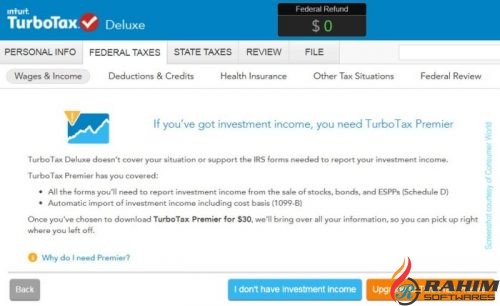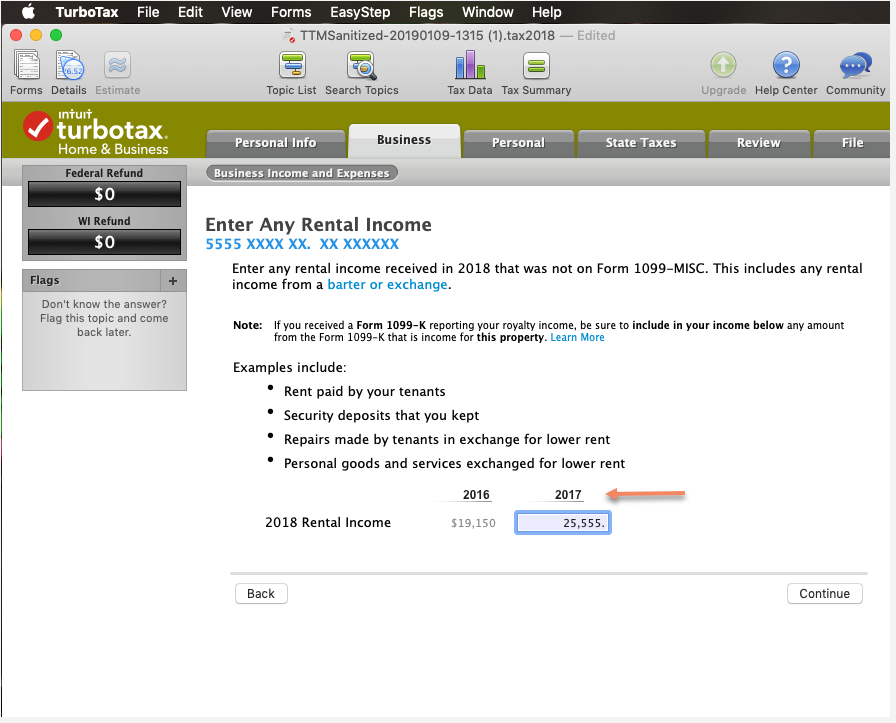


But it does mean that we should not expect quick results.Īre we doomed to high inflation for years? No. That doesn’t mean the FOMC should delay tightening it has waited too long already. So both the Federal Open Market Committee and the commentariat need to be patient.
TURBOTAX 2019 MAC CANNOT OPEN BECAUSE OF A PROBLEM FULL
Prepandemic estimates suggested that anti-inflation monetary policy takes two to three years to have its full effects. I don’t think anyone wants the Fed to cause a slump severe enough to knock 4 or 5 points off the inflation rate.įinally, remember that the effects of tight money on inflation accrue slowly. Worse yet, the evidence suggests that inflation is less responsive to unemployment today than it was when those estimates were made, making the Fed’s job even harder. So reducing inflation by, say, 2 percentage points would take four to five years of 1% higher unemployment. An old, and perhaps obsolete, rule of thumb held that reducing inflation by 1 percentage point requires about 2 to 2.5 points of additional unemployment for a year. The central bank pulls the inflation rate down not by magic but by slowing the economy. The second important thing to remember is that the Fed’s anti-inflation weapons are less powerful than many think. That’s close to what the Fed, through its monetary policy, needs to take out. If we do that, our estimate of PCE inflation exclusive of food, energy, and Covid is about 3.7%.Ĭomparing that 3.7% inflation rate with the 1.5% to 2% rate that prevailed before the pandemic leaves about 2 percentage points of inflation as a reasonable estimate of the cost of running the economy too hot for too long. To be conservative, let’s use only half of that 2.5 percentage point increase as a rough estimate of the Covid effect. Over the past 12 months, the Covid-sensitive components have contributed about 3.5 points to core PCE inflation, compared with about 1 point in 2019. Of the Federal Reserve Bank of San Francisco, divides all items in the PCE deflator into “Covid-sensitive,” such as used cars and airfares, and “Covid-insensitive,” such as tobacco and hardware. The amount of extra core inflation attributable to Covid is hard to estimate. For food and energy inflation to decline does not require those prices to fall back to earlier levels, only that they stop rising so fast.Īnother nonmonetary source of recent inflation has been the panoply of supply-chain problems which have been both symptoms and causes of the uneven recovery. Oil prices have soared past $100 a barrel, but they won’t keep rising to $200 or $300 a barrel. But we do know it must happen at some point. For example, no one knows when or how the war in Ukraine will end. They will also mostly disappear when food and energy prices level off. Those extra 1.4 percentage points of inflation were clearly not attributable to loose monetary policy because the Fed can’t do anything about food and energy prices.


 0 kommentar(er)
0 kommentar(er)
